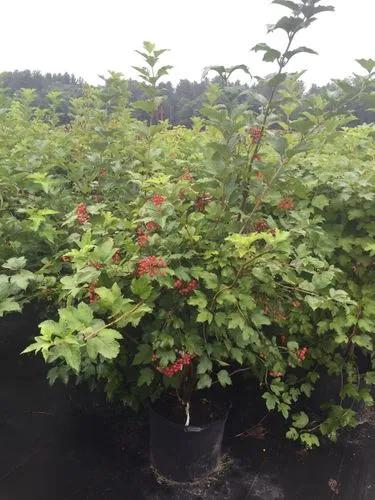Hardy kiwi (Actinidia arguta and Actinidia kolomikta) is the cold-hardy cousin of the vine that produces the familiar kiwi fruit sold at grocery stores. The latter is the species Actinidia deliciosa and is hardy only to USDA plant hardiness zone 8. Hardy kiwi is much more cold-tolerant and can be grown in zones 3, 4, or 5 (and up to 8 or 9), depending on the variety. Like its warm-weather cousin, hardy kiwi also produces a sweet edible fruit, but the hardy version is smaller (about the size of a large grape) and can be eaten whole, without peeling.While its fruit is delicious, hardy kiwi is grown in landscapes primarily for its attractive heart-shaped foliage. It is a fast-growing, vigorous vine but is rarely invasive in the way that other fast-growing vining plants can be. Kiwis are climbers of the "twining" type that grow well on trellises, fences, pergolas, and other structures. However, the vines can also overcome shrubs and small trees if left unchecked.Hardy kiwi flowers in the spring and produces fruit in the fall. Most varieties are dioecious (separate male and female plants), and females must be pollinated by a male in order to fruit. However, there is one self-pollinating variety that can fruit on its own.
Hardy Kiwi Care
Actinidia Arguta



How to Care for the Plant

Water

Water sufficiently to keep the soil moist, especially after planting the vine. Weekly watering is recommended during dry weather. Mature plants may need no additional watering beyond rainfall, depending on the climate.

Pruning

It's best to prune hardy kiwi vines in winter, to promote fruit production. The first year after planting, select the most vigorous shoot that is straight, designating it as the permanent trunk. Cut back other shoots so as to concentrate vigor in the trunk. In subsequent winters, cut back each stem to 8 to 10 buds. In addition, prune as needed during summer to remove any excessively long shoots. There also may be more pruning techniques specific to the trellising method used.

Fertilizer

This vigorous vine requires little in the way of feeding. A light layer of compost over the root area provides all the nutrients necessary. If you do want to feed the vine, use a slow-release or organic fertilizer, and apply it carefully to prevent fertilizer burn.

Sunlight

Hardy kiwi vines can tolerate a range of light conditions from sun to shade, but greater exposure to the sun often results in superior color in the varieties with variegated leaves.

Soil

Plant kiwi vines in a loamy, well-drained soil. Some experts advise that planting in poorer soil may control the fast growth of the plant.

Temperature

Hardy kiwi can survive winter in most areas, but it is susceptible to damage from late frosts. For this reason, choose a planting site that is not in a frost pocket or subject to particularly cold wind in spring.

Popularity

543 people already have this plant 38 people have added this plant to their wishlists
Discover more plants with the list below
Popular articles






